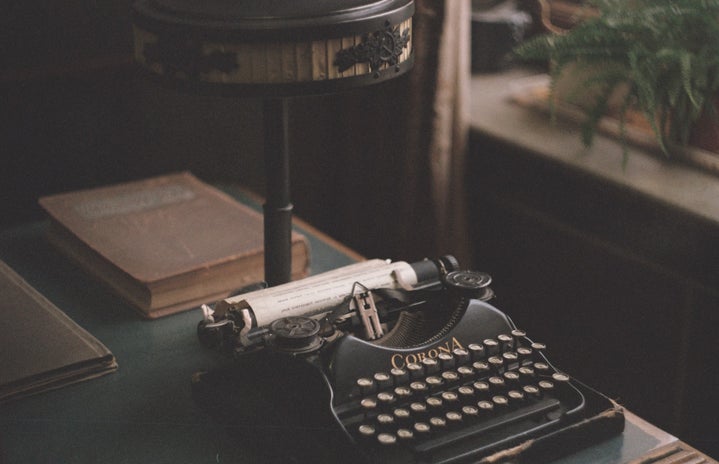Art Movements 101
The Harlem Renaissance began around 1918 in Harlem, a borough of New York, though it was called something else until 1947, when John Hope Franklin coined the phrase. While the movement was concentrated in New York, the Harlem Renaissance took place all over America, especially in states like Chicago and Louisiana. The Harlem Renaissance was the reawakening of Black culture in America after it had been suppressed for hundreds of years. While Black Americans still faced segregation, civil inequality, discrimination, and large amounts of hate (as well as hate crimes), the Harlem Renaissance allowed the Black community to re-create their spot in American culture.
Unsurprisingly, some of the most fantastic art, music, literature, and theatre came from the Harlem Renaissance. This movement is much different from other art movements because it is tied so heavily to civil rights, as the events of the Harlem Renaissance helped lead to the civil rights movements of the 50s and 60s.
The movement began with the Great Migration, when many Black Americans moved from the South of America to the North and began buying property in more urban areas, like Harlem in New York and New Orleans in Louisiana. It was led by W.E.B du Bois, a writer and activist determined to finally get Black artists the credit they deserved; he helped poet Claude McKay and writer James Weldon Johnson find success. Du Bois advocated for “ethnic pluralism,” which was a social movement that allowed those of different cultural backgrounds to grow alongside each other instead of trying to blend all cultures together. With Black writers finally getting some attention, Charles Spurgeon Johnson, who was mainly a researcher but also a writer, founded and edited the magazine Opportunity, which was integral in allowing Black poets and authors to show off their work (it gained enough traction that the creators’ work was also featured in mainstream magazines). Johnson was one of the reasons the Harlem Renaissance flourished.
Other important figures from the early years of the Harlem Renaissance were Langston Huges and Zora Neale Hurston. In 1925, Hughes’ poem “The Weary Blues” was published in Opportunity magazine. From there, his talent was recognized by Carl Van Vechten, who helped Hughes publish his first poetry book. Hughes later published a novel in 1929. Another writer who appeared during the Harlem Renaissance was Zora Neale Hurston, whose most famous work is Their Eyes Were Watching God (1937). Hurston was an anthropologist as well, and she used her art to record cultural history. She published an essay entitled, “How It Feels to be Colored Me,” which was a personal account of her life and documented the shock of moving into an all-white neighbourhood. While visual and performing arts were the current focus, other areas of America were experiencing their own cultural renaissance. Harlem Renaissance writers and poets were the first to introduce writing poetry in a lyrical way, blending jazz, ragtime, and blues rhythms into the reading of their poetry.
In the Southern states of America, the style of blues was being developed. Originally sung by mainly Black men, blues combined church songs, ragtime, folk, and work songs created by enslaved people and turned them into a style of music characterized by lyrical rhythms, sustained notes, and lyrics that were sung from the heart instead of trying to tell a story. The first recorded blues songs were by Black women like Mamie Smith, Ma Rainey, and Ida Cox. Their style of blues was accompanied by a backing band of jazz musicians. Blues-inspired jazz originated in New Orleans, which was another hotspot during the Harlem Renaissance. Louis Armstrong was one of the strongest influences for jazz music across America. His vocals and playing style, heard in songs like “What a Wonderful World,” “Star Dust,” and “La Vie en Rose,” were entirely unique. Armstrong started as a blues player who had to work manual jobs between gigs in order to earn a living wage. However, he soon rose to prominence, and his music was heard all over America. Other artists, like Duke Ellington and Billie Holiday, created popular jazz music in other states and had a large influence on the music aspect of the Harlem Renaissance. Duke Ellington was a composer who started in ragtime before joining a jazz band that eventually turned into a small jazz orchestra filled with musicians who put a unique twist on how they played. Ellington won a total of 12 Grammys for his unique, heartwarming style of jazz. Billie Holiday started making music at 18 years old and is known to be one of the most talented jazz artists of all time and one of the first Black women to sing with a white orchestra. Though she died young, Billie Holiday had a lasting impression on jazz and inspired many other jazz artists.
The Great Depression caused the Harlem Renaissance to come to an end as people became too poor for entertainment and artists struggled to make ends meet. This had a lasting effect on American culture. Rock music took its cue from jazz and blues music, with Black women again leading the way. In fact, the famous song “Hound Dog,” which many believe was an Elvis Presley original, was actually written and performed by Big Mama Thornton first and then covered by Elvis Presley (her version is much much better in my opinion). You can listen to her sing here.
Finally, visual artists, like Augusta Savage, also influenced art in both traditional and nontraditional ways. Augusta Savage opened the Harlem Community Art Center in 1937 as a way to teach and inspire new Black artists, including Jacob Lawrence. Lawrence’s Migration Series, a 60 panel collection of avant-garde shapes and bright colours telling the story of The Great Migration, is featured at the MoMA and has been on display since 1941. Lawrence was the first Black artist to accomplish this. He received the U.S National Medal of Arts in 1990. Aaron Douglas also used his art, which combined European modernism with traditional styles of African art, to talk about social issues like racism and segregation in the US. He eventually accepted a position in the art department at Fisk University. The works of these artists, as well as countless others, used their heritage and African art to create a whole new style, infusing it with their stories and bringing awareness to the social injustices they faced.
The Harlem Renaissance set up the Civil Rights movement of the 1960s, as well as challenging the Jim Crow laws and segregation by showcasing Black culture. Artists born during this time, like Maya Angelou, James Baldwin, and Audre Lorde (the latter two born in Harlem), were influenced by the stylings of the Harlem Renaissance. Many bands and musical acts used blues and jazz influences in their music, the creation of which we owe to the Harlem Renaissance. Even though the Harlem Renaissance was an explosion of Black culture, Black Americans still faced segregation, racism, hate crimes, discrimination, and Jim Crow laws. Even though Black artists faced these challenges, and many more, they still decided to show the world their art; music and art as we know it would not exist without the artists of the Harlem Renaissance. We owe so much of the art we enjoy to Black artists, and it’s important to educate ourselves on their contributions to our society.
https://www.history.com/topics/roaring-twenties/harlem-renaissance
https://www.biography.com/writer/langston-hughes
https://www.poetryfoundation.org/collections/145704/an-introduction-to-the-harlem-renaissance
https://nmaahc.si.edu/blog-post/new-african-american-identity-harlem-renaissance
https://www.biography.com/musician/louis-armstrong
https://www.biography.com/musician/duke-ellington
https://www.biography.com/musician/billie-holiday
blues | Definition, Artists, History, Characteristics, Types, Songs, & Facts | Britannica
jazz | Definition, History, Musicians, & Facts | Britannica
https://www.britannica.com/event/Harlem-Renaissance-American-literature-and-art/Black-heritage-and-American-culture https://mymodernmet.com/african-american-artists/


